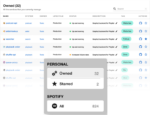What’s the traffic like? No, not on the notoriously backlogged US-101 cutting through Silicon Valley, not on Route 128 around Boston, not even “The Four Oh Five” in Los Angeles. I mean the traffic through your office’s Internet connection.
A friend of mine who administers a mid-size business network says the lion’s share of traffic across his broadband connection is Spotify. “It was the highest packet TX/RX set on the WAN, by a very large margin,” he wrote to me.
We laughed about this, and about how the world changed.
In the 1970s, if employees were allowed to listen to music in their offices and cubicles, it was probably on a transistor radio. In the 1980s, it was a Walkman cassette player, or later on a CD player. Of course, starting in the early 2000s, everyone listened to an iPod or another music player through those ubiquitous ear buds.
Today, workers listen to streaming packets across the Internet. Perhaps it’s music over Spotify or Pandora. Perhaps it’s an Internet radio station offering some classic rock or talk shows. Nearly every broadcast radio station, of course, promotes streaming services, often specifically targeting business workers in their cubicles.
The irony, of course, is that sometimes those workers are streaming Beatles, Black Eyed Peas, Björk or Bieber packets from the very same radio stations whose signals are permeating their offices. In fact, the audio fidelity is usually higher on that old-fashioned transistor radio instead of using an app.
That’s why, in my own office, I don’t stream music over the Internet. What’s playing is my own music library (ripped from CDs and stored in iTunes), or a local FM station using a 15-year-old Grundig YB-400 receiver.
Of course, not all offices are near good radio stations. Radio signals don’t always penetrate the bowels of modern concrete-and-steel buildings. I’m not condemning the use of Internet radio, Spotify or Pandora per se, but I am wary about the bandwidth they consume. When those services’ high-QoS packets dominate our business networks and Internet connections, we should pay attention to this trend.
What does streaming media mean from a developer perspective? If you are building a streaming media service, please please please make sure that your service is not wasteful of bandwidth. A single user’s bandwidth impact is trivial. Dozens or hundreds of users are not trivial.
Be a good citizen by building good caching into your player apps so that you can lower the required QoS on your packet headers. Perhaps even offer the option to adjust audio bitrate and compression (“CD level” vs. “FM quality”) so that long-term streamers can reduce the network load.
Does your organization have a problem with streaming media consuming too much bandwidth? Do you have HR policies that prohibit their use, or firewall policies that shut them down? Talk back at feedback@bzmedia.com.
Alan Zeichick is editorial director of SD Times. Read his blog at ztrek.blogspot.com.






